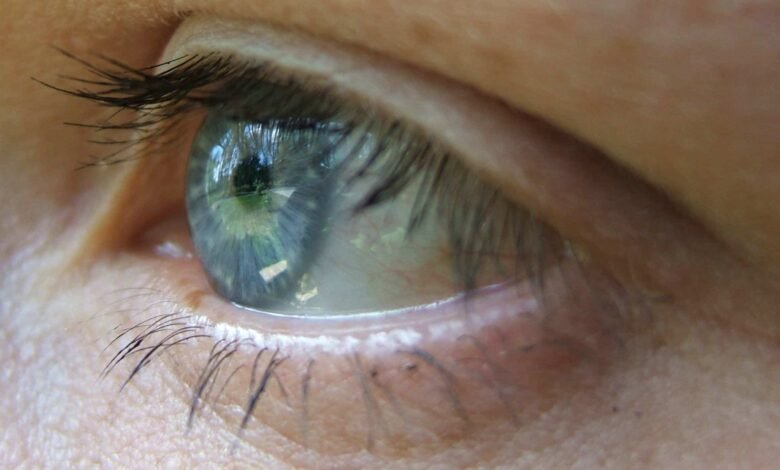Hordeolum

What is a hordeolum?
Barley of the eye – its medical name is hordeolum, it develops when the sebaceous glands at the edge of the eyelid become blocked or become infected by the demodex parasite . It resembles a small pimple on the eyelid, it can appear on the inner or outer side.
The initial symptoms are pain, redness, swelling of the affected area. After the initial signs appear, a small pimple begins to develop on the affected area. This is usually accompanied by swelling of the entire eye. Sometimes it swells only in the area near the pimple, in other cases the entire eyelid swells.
Chordeolum usually does not cause vision problems. The patient’s ability to see well at near or far distance should not be affected by the development of the cataract.
Other symptoms may occur with chordeolum, such as hypersensitivity to light, itching or irritation of the affected area.
Although it usually does not affect vision, it is important to see a doctor to get the correct diagnosis and treatment recommendation.
Causes of hordeolum
One of the main causes of this condition is the bacterium “Staphylococcus aureus”, which is widespread in our environment and often inhabits the skin and nasal area.
This bacteria can easily be transferred from the hands to the eyes, especially if strict hand hygiene is not followed. Another possible cause of hordeolum is the demodex parasite, which can also block the sebaceous glands of the eyelids.
In addition, chronic eye conditions such as blepharitis can also increase the risk of developing a hordeolum.
Barley is contagious, but almost all of us have these bacteria that cause it in our bodies. All of us, no matter what age we are, can develop stye even without external pollution.
However, if you already have barley, you wouldn’t want to infect someone else, would you, so it is advisable to maintain very good personal hygiene, such as your hands and eyes should always be clean.
Don’t share your pillowcase, sheets, hand and face towels with anyone else.
Treatment of stye of the eye (hordeolum)
In most cases, stye heals on its own within a few days – our immune system is able to quickly deal with the bacterial infection.
You can speed up the process by applying hot compresses to the affected area for 10-15 minutes 3 or 4 times a day until you notice that the infection gradually subsides, this usually happens after a few days.< /strong>
In addition, this will relieve your pain and discomfort, and the barley will already take the form of a pimple, and then it will burst, dry and heal itself without the need for further intervention.
Barley is not harmful to vision and usually heals quickly – within a few days. You should never try to crack barley with your hands.
Let the barley pop on its own. A stye on the inside of the eyelid, called an internal hordeolum, may not be able to burst and heal on its own.
This type of stye may cause complications, so it is imperative to consult your eye doctor to have it burst so that the pus can drain out and heal.
If you often get styes in your eyes, your eye doctor may prescribe an antibiotic and a special ointment to help prevent this eye infection from developing frequently.
He may also recommend that you use special wet eyelid wipes to treat your eyelids daily to reduce the risk of developing styes and blepharitis.
Other eye problems can accompany hordeolum – your affected eye may water frequently, have increased sensitivity to light and feel like you have something in your eye, ophthalmologists describe it as a foreign sensation body in the eye.
Often barley of the eye is confused with chalazion, which is characterized by swelling and blocking of the sebaceous glands of the eyelid. A chalazion mimics barley in the first few days of its appearance, then it turns into a painless bump with a round shape.
In most cases, the chalazion appears further away from the eyelid margin than the stye. Although in most cases the treatment is applied to barley affects the chalazion, the swelling of the eyelid can last much longer – from one to several months.
If the chalazion doesn’t heal in a few months, your eye doctor may burst it or inject medication into it to help it heal faster.
Consult a specialist
In conclusion, hordeolum is a condition that can be encountered in people of all ages and life situations.
Although this is a common disease, it can cause significant discomfort and trouble for affected individuals.
Pain, redness and swelling of the eyelid, which are characteristic of hordeolum, can be a cause for concern and reduce the quality of life.
However, it is important to note that hordeolum is usually not dangerous to sight and can be effectively treated with appropriate self-treatment measures.
Applying warm compresses, maintaining good hand and eye hygiene, and avoiding unnecessary contact with the eyes can go a long way in quickly and effectively dealing with this condition.
In addition, it is important to consult a medical professional if symptoms persist or worsen. In some cases, treatment with antibiotics or other medications prescribed by an eye doctor may be necessary. Either way, styes usually go away on their own within a few days.
Also, it is important to note that although hordeolum is a common condition, it can be prevented.
Maintaining good personal hygiene, avoiding contact with the eyes, and regular visits to an eye doctor can help prevent the development of this condition. After all, prevention is the best defense against hordeolum.



